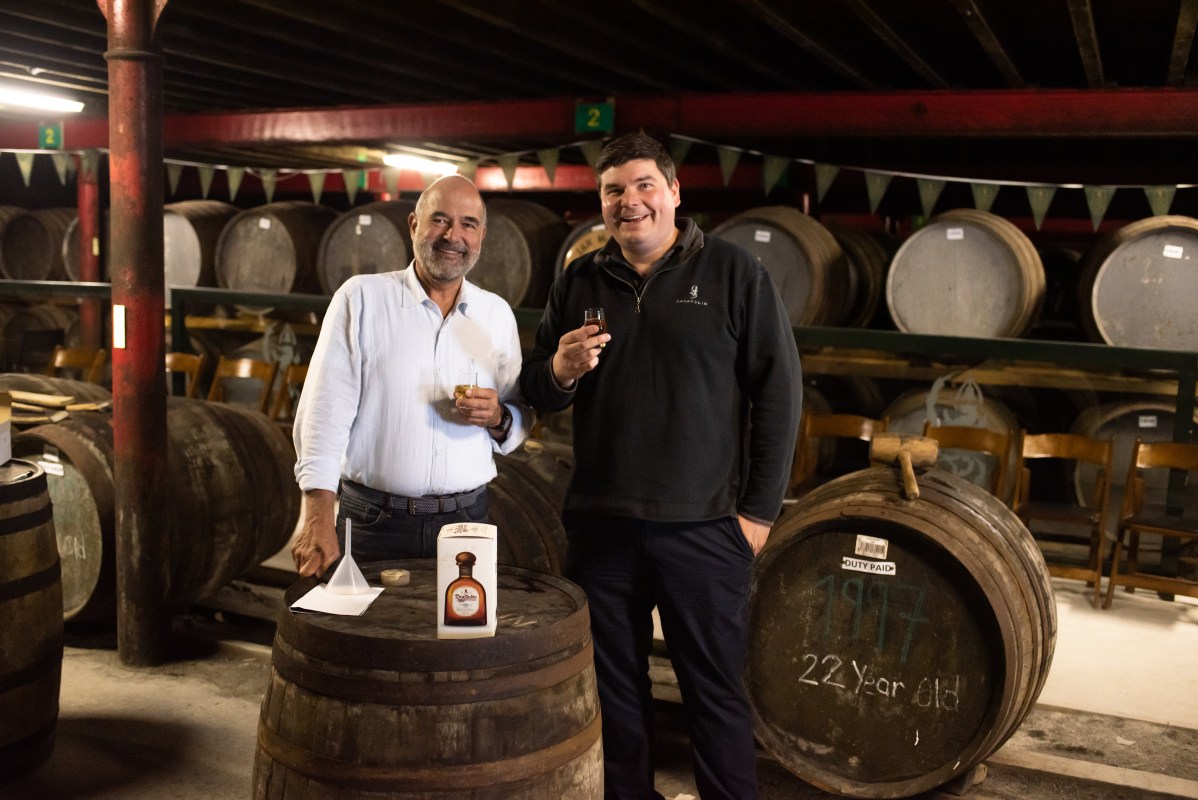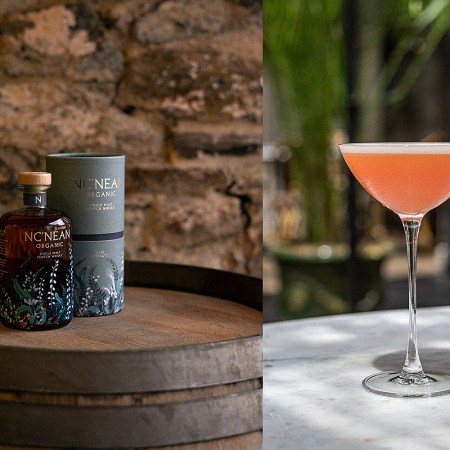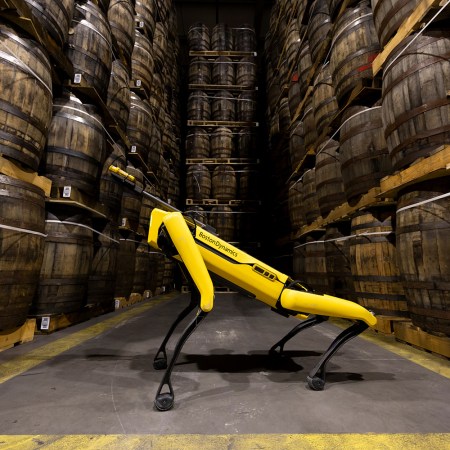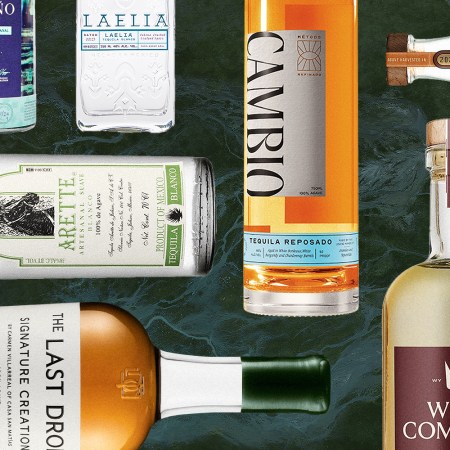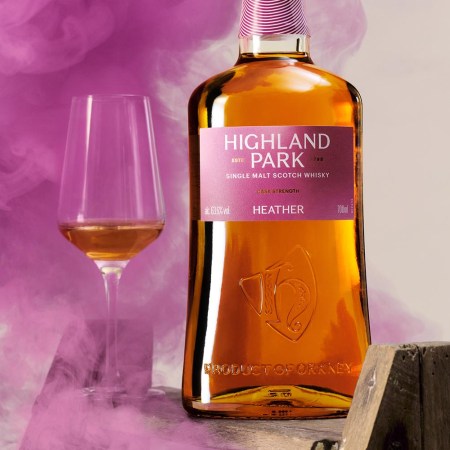“I think this is for both the tequila and whisky fans.”
That’s Enrique de Colsa, the Master Distiller for Tequila Don Julio, describing the brand’s second foray into combining those two worlds, Tequila Don Julio Reposado, Double Cask. It’s a limited-edition reposado tequila finished in casks which previously held Lagavulin Islay Single Malt Scotch Whisky.
A crossover between tequila and whisky isn’t unfounded: sipping an aged añejo or extra añejo is just as elevated and rewarding as any single malt experience (and a few tequilas already finish their aged product in American whiskey barrels).
Still, “smoke” isn’t the usual characteristic used to describe a tequila. And that new characteristic looks to both Islay single malts and another agave spirit, mezcal, for its transformation.
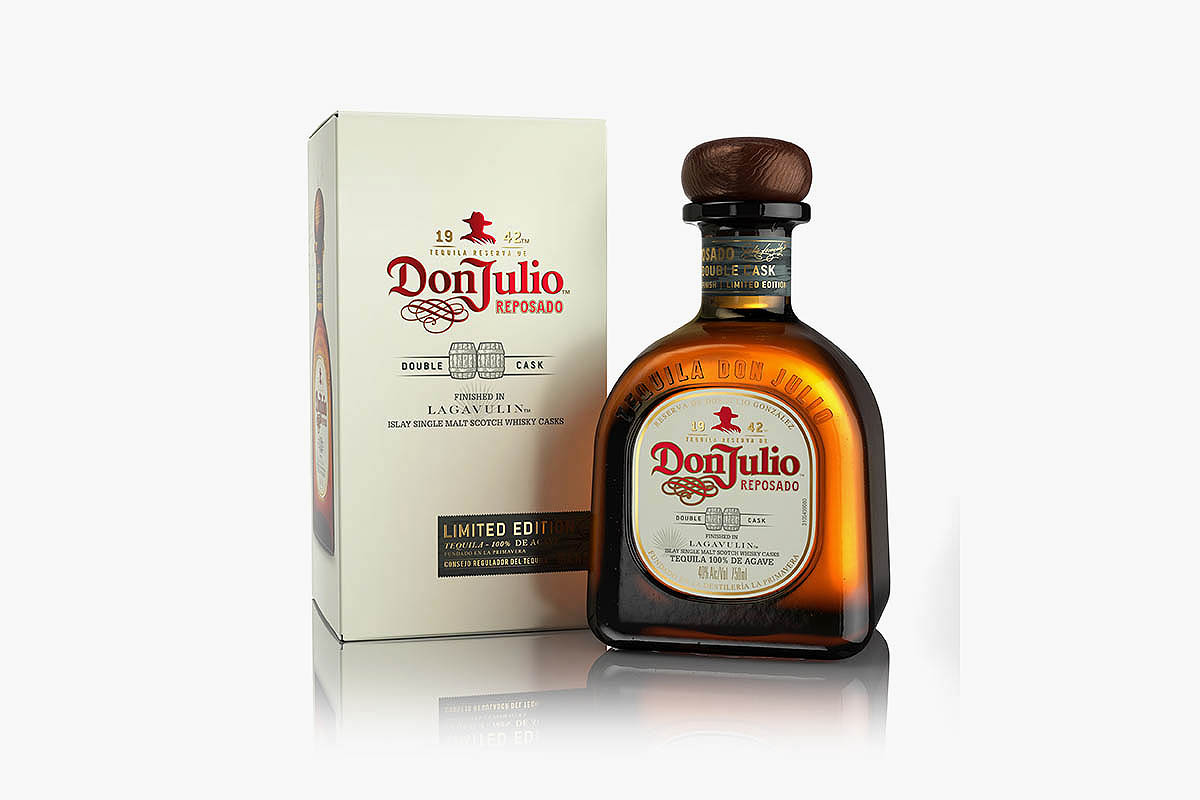
For this new collaboration, Don Julio matured their tequila in American white oak barrels for eight months, then finished it for two weeks in casks that previously held Lagavulin. Although it’s a misnomer that most Scotch is smoky, that’s entirely the case for Lagavulin — a favorite of Nick Offerman and Ron Swanson, mind you.
“As the iconic Islay malt, Lagavulin embodies the finest, pungent flavors native to the region,” says de Colsa. Yes, pungent — the Islay whiskies are decidedly bold and smoky.
But the Double Cask release doesn’t come across as two competing spirits — instead, there’s a real harmony here. It’s slightly smoked agave on the nose, a rich and creamy mouthfeel and a definitive smokiness on the back end. Hints of sherry, oak and peat are present, with caramelized agave the most prevalent note.
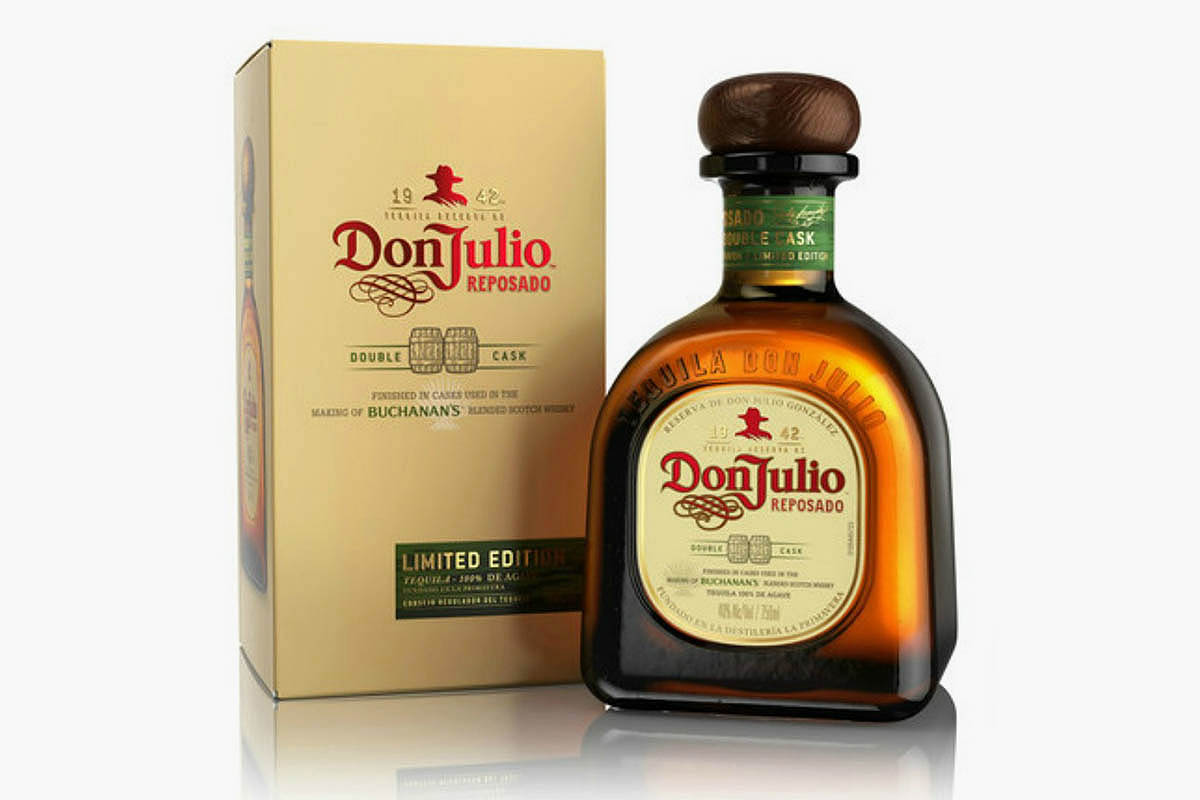
The collaboration follows a Double Cask release last year that was finished for 30 days in casks used in the making of Buchanan’s Blended Scotch Whisky, the first innovation from Don Julio in seven years. “It was a great way to showcase some experimentation with cask options available within the Diageo portfolio,” as de Colsa tells us. “For that one, I worked to match the flavor of both spirits — notes of apples and honey. Lagavulin is fuller bodied and bolder; there, I worked to contrast the freshness of the agave against the dryness of the peat.”
That previous Double Cask was definitely more subtle. When I tried it last June, I didn’t notice anything except agave on the nose or palate — it was only the aftertaste that was the dry and smoky. As de Colsa told me at the time: “We didn’t want a tequila that tastes like whisky; we wanted to retain the flavors of our tequila. We think of [the Don Julio/Buchanan’s collaboration] as 95% of the taste is tequila, 5% whisky. But they’re lovely sensations.”
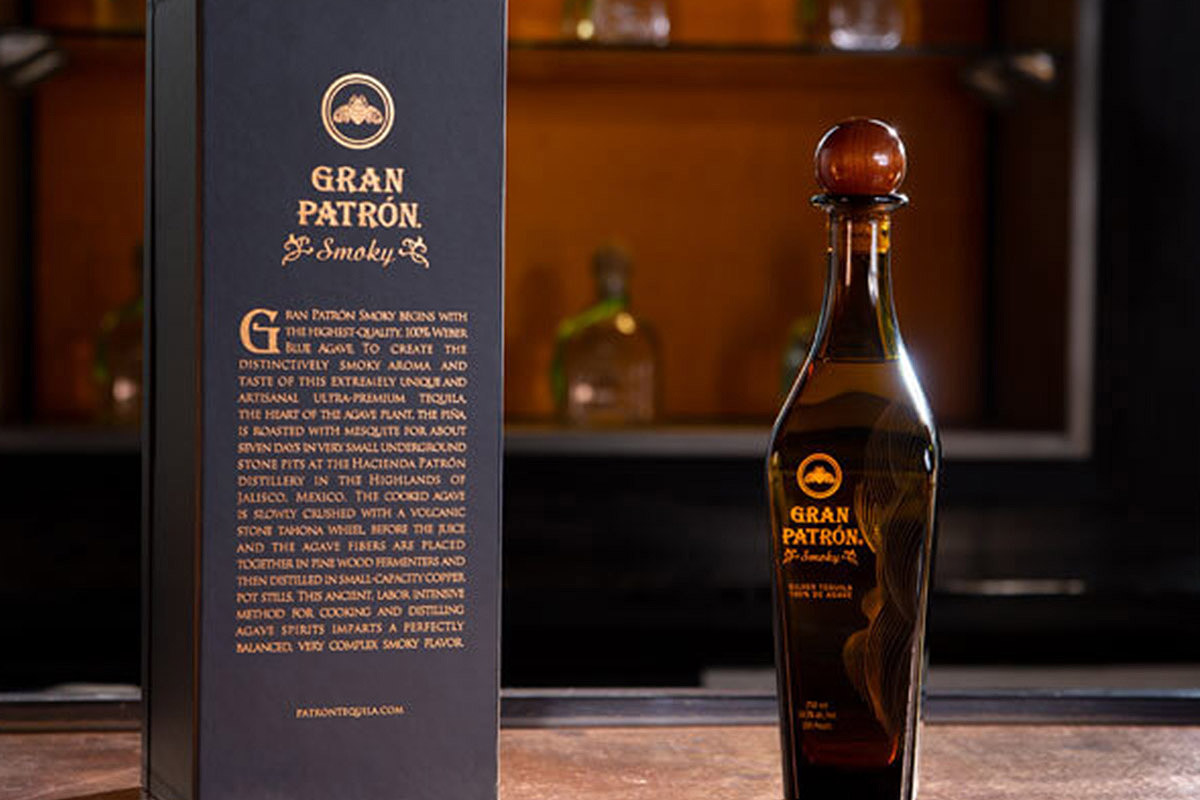
A different smoke approach was also undertaken last fall by Patron. That brand’s relatively new Gran Patrón Smoky utilizes a traditional mezcal-style technique in its production process to impart a smoky flavor to its core product. Here, the smoky element was created by roasting the piña of the agave plant in underground stone pits; the end result is a tequila with an extra, pepper-y kick, but one that definitely is more reminiscent of a different spirit.
“We started working [on Smoky] when we noticed the trend of smokiness and people asking about mezcal,” as Patrón’s Director of Production, Antonio Rodriguez, told us last fall. “We asked, what if Patron was made as a mezcal? It’s a different spirit entirely and made in a different area, and we weren’t going to move and build a distillery or buy the liquid. So we focused on the cooking part, putting dry heat on the agave, but keeping all the same controls we have for our tequila.” (As well, the company utilized a blanco, not reposado, tequila.)
While they all use different methods and abide different goals, each of the three spirits we tried managed to add a little (after)fire to their products without resorting to gimmicks or artificial flavors. Interestingly enough, I don’t agree with de Colsa’s proclamation — to me, each of these three spirits feels like a great way for tequila lovers to experience something unique, but I don’t necessarily see them converting dedicated fans of single malts or mezcals.
Every Thursday, our resident experts see to it that you’re up to date on the latest from the world of drinks. Trend reports, bottle reviews, cocktail recipes and more. Sign up for THE SPILL now.
